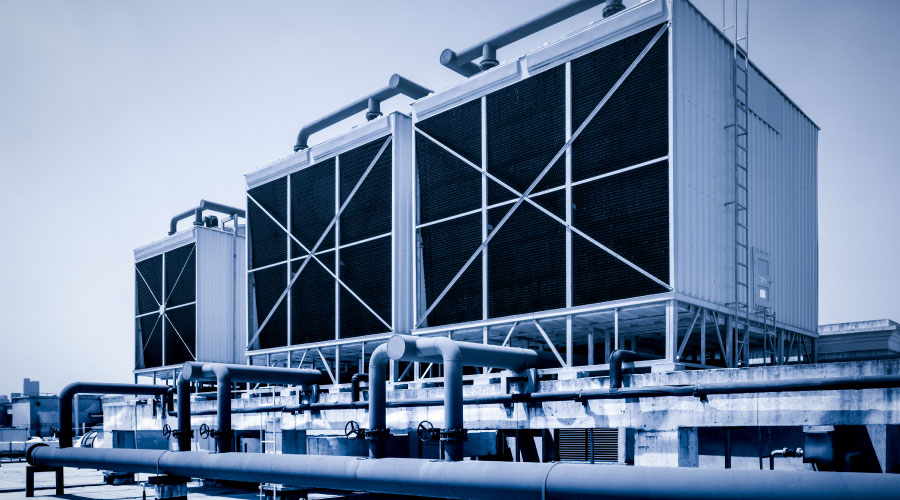
Baltimore Aircoil Company Develops Solution for Smithsonian
The Steven F. Udvar-Hazy Center needed to increase its cooling tower capacity. September 8, 2023
Faced with challenging specifications for increasing cooling tower capacity and the need for reduced maintenance cost and inspection accessibility, Baltimore Aircoil Company (BAC) developed a solution for the Smithsonian National Air and Space Museum’s Steven F. Udvar-Hazy Center.
The Smithsonian National Air and Space Museum’s Steven F. Udvar-Hazy Center is home to several aircraft hangars with an exhibited collection of thousands of aviation and space artifacts, as well as a theater, observation tower and restoration facilities. With extensive facilities and an HVAC system that could not keep pace with demands, it became clear to the museum and to the consulting engineers at AECOM, who managed the project, that a new HVAC system was desperately needed.
The museum was supported by cooling towers that were old and lacked adequate capacity to serve the building’s increasing cooling load. Site conditions did not allow for a larger cooling tower footprint to meet the increased load. To deliver enough chilled water at peak efficiency and to fix the original hydronic design for the towers, the facility managers were faced with elevating the towers by six feet. While solving the HVAC system performance challenge, this created a service dilemma: how to safely and efficiently perform routine inspection and maintenance on cooling towers that were 25 feet above ground.
Working with the Smithsonian Institution and AECOM, the engineers at Baltimore Aircoil Company and The Morin Company, the local BAC representative, presented an innovative solution to dramatically improve the reliability of the cooling tower while reducing the need for regular service and maintenance of the fan-drive system.
The result was a recommendation to replace the existing cooling towers with new cooling tower technology from BAC, which would improve heat rejection capacity and chiller functions. The solution enhanced the capacity of the cooling tower within the existing tower footprint and reduced maintenance requirements.
To ensure safety of maintenance professionals during the life of the cooling tower and a reduction in overall maintenance costs, Dilip Parikh, P.E., senior project manager at AECOM, and the BAC team decided to replace the traditional fan power transmission with an innovative, simplified direct-drive fan system.
Direct-drive fan systems are becoming accepted as the gold standard for high reliability and low maintenance throughout the markets BAC serves. BAC has led the evaporative cooling industry for over a decade in applying innovative technologies to factory assembled evaporative heat transfer products.
Thanks to the customer choosing BAC’s ENDURADRIVE Fan System, the cooling towers at the National Air and Space Museum’s Udvar-Hazy Center are now capable of meeting the site’s cooling needs with extremely limited maintenance requirements.
The BAC Series 3000 cooling tower with ENDURADRIVEÔ Fan System was installed at the National Air and Space Museum’s Udvar-Hazy Center at the end of 2018 and has been in continuous operation since then. As expected, BAC’s cooling tower solution has reduced maintenance and increased efficiency for the Smithsonian Institution, and it continues to meet the performance needs of the center.
BAC’s solution for the National Air and Space Museum, Steven F. Udvar-Hazy Center met the project’s challenging specifications for increasing cooling tower capacity and has led to dramatically reduced maintenance costs and greater inspection accessibility.
Next
Read next on FacilitiesNet












